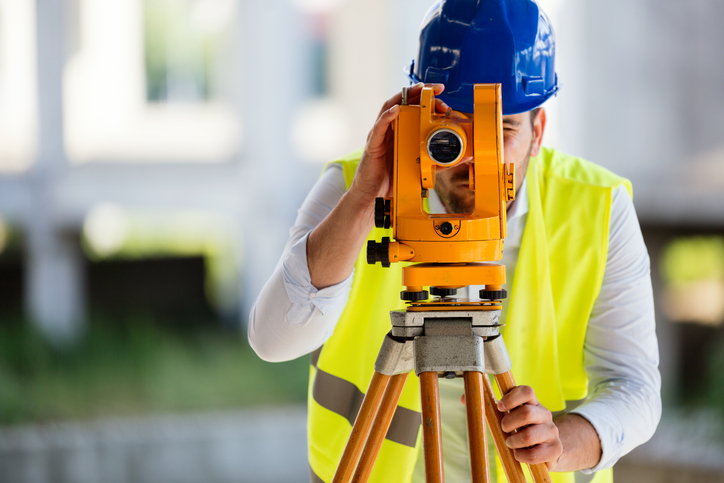The Overlooked Importance of Pre-Construction Site Surveys for Jobsite Safety
Ryleigh Dirks August 4, 2025 0 COMMENTS
In the world of construction, safety is often discussed in the context of protective gear, OSHA compliance, and on-site behavior. While those are critical factors, one area that doesn’t receive nearly enough attention is pre-construction site surveying—the unsung hero of jobsite safety and project efficiency.
Before a single foundation is poured or wall is framed, the groundwork—both literal and strategic—must be solid. Pre-construction surveys do more than mark boundaries; they lay the foundation for safety, accuracy, and compliance throughout the entire build.
Why Site Surveys Matter for Safety
A well-executed site survey identifies hazards before construction begins. That might sound obvious, but in practice, it’s often rushed or delegated to underqualified teams. According to the Occupational Safety and Health Administration (OSHA), site-specific planning is essential to minimizing risk. Site surveys help with:
-
Identifying uneven terrain or unstable soil
-
Verifying accurate elevation changes
-
Confirming clearances and legal boundaries
-
Planning equipment movement and staging
-
Avoiding conflicts with underground utilities or easements
Without this data, construction teams may operate on assumptions—one of the leading causes of costly delays, safety issues, and structural errors.
The Cost of Skipping Proper Surveying
Skipping or cutting corners on a site survey can have catastrophic consequences. Misplaced foundations, framing misalignments, or misjudged elevations can require total rebuilds—not to mention expose workers to unsafe conditions.
In fact, the National Institute for Occupational Safety and Health (NIOSH) reports that falls, struck-by incidents, and structural collapses remain among the top causes of construction fatalities. Many of these stem from poor layout, improper grade, or inaccurate measurements—errors that could have been prevented with a thorough pre-construction survey.
How Story Poles and Elevation Surveys Fit In
One often underutilized tool in site verification is the story pole—a vertical reference device used to confirm height measurements, door and window openings, and alignment with design plans.
While more common in traditional or custom builds, story pole surveys are seeing a resurgence thanks to their unmatched precision. When used alongside laser levels or total stations, they provide a physical representation of architectural intent, allowing builders to visually validate elevations and framing before errors become embedded in the structure.
Story pole surveying is especially vital in hillside construction, multi-level builds, and projects where precision is non-negotiable.
Beyond Compliance: A Culture of Accountability
While compliance with safety regulations is essential, a survey-first approach does more than check boxes—it signals a culture of accountability and professionalism. Accurate data from licensed surveyors gives project managers the confidence to move forward and reduces liability across the board.
Additionally, well-documented pre-construction surveys support due diligence. In the event of a dispute or inspection, having accurate site measurements can protect contractors, property owners, and architects from legal fallout.
Who Should You Trust with Pre-Construction Surveying?
Not all surveyors are created equal. You’ll want professionals who understand the intersection of safety, engineering, and construction practicality. This includes those who specialize in elevation verification, story pole application, and framing layout.
If you’re building in California—where elevation differences, seismic risks, and design precision are especially critical—consider working with a reputable California story pole contractor who understands the region’s safety codes and terrain challenges. Contact us today!
Laying a Foundation of Safety
Ultimately, jobsite safety begins before the first steel-toe boot hits the ground. A pre-construction site survey is not a luxury or a formality—it’s a cornerstone of responsible, efficient, and safe building practices.
Cutting corners in the early stages may save time upfront, but it often leads to greater costs, rework, and risk down the road. By investing in proper surveying and layout, builders not only protect their teams—they also deliver better results for their clients.
RELATED ARTICLES
Recent Posts
- Why Thanksgiving Is the #1 Day for Home Cooking Fires — And How to Prevent Them
- The Hidden Shoulder Hazards in Construction Work — and How Workers Can Stay Safe
- The Hidden Safety Risks on Today’s Construction Sites — And Why Better Site Data Matters More Than Ever
- What the New Social Security Disability Changes Could Mean for Workers
- Home Safety Checklist 2026: Preventing Accidents, Fires, and Break-Ins in Comal County


